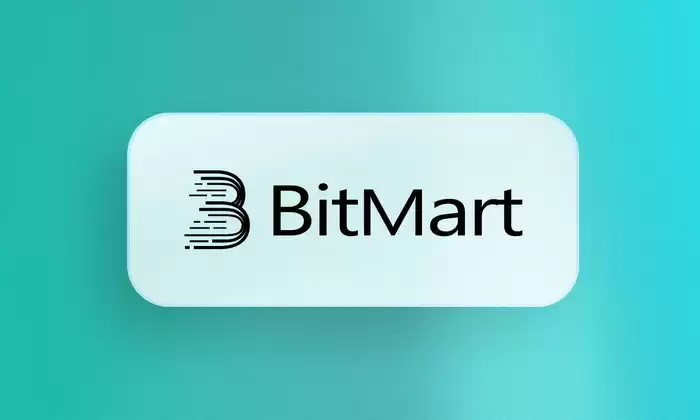-
 bitcoin
bitcoin $115692.075601 USD
5.13% -
 ethereum
ethereum $4162.931611 USD
11.68% -
 bnb
bnb $1310.063287 USD
17.56% -
 tether
tether $1.000983 USD
0.00% -
 xrp
xrp $2.534505 USD
8.16% -
 solana
solana $198.235737 USD
13.49% -
 usd-coin
usd-coin $1.000236 USD
0.02% -
 dogecoin
dogecoin $0.207352 USD
12.89% -
 tron
tron $0.323043 USD
3.62% -
 cardano
cardano $0.701559 USD
11.88% -
 hyperliquid
hyperliquid $39.924597 USD
8.30% -
 chainlink
chainlink $18.934457 USD
11.56% -
 ethena-usde
ethena-usde $1.000552 USD
0.02% -
 stellar
stellar $0.340575 USD
7.05% -
 bitcoin-cash
bitcoin-cash $545.011757 USD
8.86%
How to make money trading BitMart contracts
Trading BitMart contracts involves buying or selling cryptocurrency contracts with the aim of profiting from price fluctuations, but it carries the risk of losses due to market volatility and potential liquidation.
Nov 27, 2024 at 04:12 pm

How to Make Money Trading BitMart Contracts
BitMart is a cryptocurrency exchange that offers a variety of trading options, including futures contracts. Futures contracts are agreements to buy or sell a certain amount of a cryptocurrency at a set price on a future date. They can be used to speculate on the price of a cryptocurrency or to hedge against risk.
How to Make Money Trading BitMart ContractsThere are a few different ways to make money trading BitMart contracts. The most common method is to buy a contract when the price of the cryptocurrency is low and sell it when the price is high. This is known as going long. You can also sell a contract when the price of the cryptocurrency is high and buy it back when the price is low. This is known as going short.
In addition to going long or short, you can also use leverage to increase your potential profits. Leverage is a way of borrowing money from the exchange to trade with. This allows you to trade with more money than you actually have, which can increase your profits if the price of the cryptocurrency moves in your favor. However, it can also increase your losses if the price moves against you.
Risks of Trading BitMart ContractsThere are a few risks associated with trading BitMart contracts. The most important risk is that you can lose money. The price of cryptocurrencies can be very volatile, and there is always the potential that the price will move against you. You should only trade with money that you can afford to lose.
Another risk of trading BitMart contracts is that you can be liquidated. Liquidation occurs when the price of the cryptocurrency moves against you and you do not have enough money in your account to cover your losses. If you are liquidated, you will lose all of the money that you have invested in the contract.
How to Get Started Trading BitMart ContractsIf you are interested in getting started trading BitMart contracts, there are a few things that you need to do. First, you need to create an account on the BitMart exchange. Once you have created an account, you need to fund your account with cryptocurrency. You can do this by depositing cryptocurrency from another exchange or by buying cryptocurrency with a credit card.
Once you have funded your account, you can start trading contracts. To do this, you need to select the cryptocurrency that you want to trade and the amount that you want to trade. You also need to select the type of contract that you want to trade (long or short).
Once you have selected all of the options, you can click the "Trade" button. The exchange will then execute your order and you will be entered into a contract.
Tips for Trading BitMart ContractsHere are a few tips for trading BitMart contracts:
- Do your research. Before you start trading, it is important to do your research on the cryptocurrency that you want to trade. This will help you to understand the risks involved and to make informed trading decisions.
- Start small. When you first start trading, it is important to start small. This will help you to get a feel for the market and to avoid losing too much money.
- Use stop-loss orders. Stop-loss orders are a way to limit your losses. When you place a stop-loss order, the exchange will automatically sell your contract if the price of the cryptocurrency moves against you. This can help you to protect your profits and to avoid losing all of your money.
- Don't overtrade. It is important to avoid overtrading. This is when you trade too much and you start to make mistakes. If you overtrade, you are more likely to lose money.
- Be patient. Trading is not a get-rich-quick scheme. It takes time and patience to learn how to trade profitably. Don't get discouraged if you don't make money right away. Keep learning and practicing, and you will eventually be successful.
Disclaimer:info@kdj.com
The information provided is not trading advice. kdj.com does not assume any responsibility for any investments made based on the information provided in this article. Cryptocurrencies are highly volatile and it is highly recommended that you invest with caution after thorough research!
If you believe that the content used on this website infringes your copyright, please contact us immediately (info@kdj.com) and we will delete it promptly.
- XRP Price Prediction: Weekend Rollercoaster or Rally?
- 2025-10-12 08:45:16
- Bittensor (TAO): Super Bullish Signals Point to Potential 2x Rally
- 2025-10-11 10:25:12
- Silver Price Correction: Navigating the Dip & Identifying Key SEO Keywords
- 2025-10-11 10:25:12
- Decoding Crypto Trends: Bittensor's Bull Run, Cardano's Dip, and LivLive's Presale Buzz in 'Uptober 2025'
- 2025-10-12 08:45:16
- MoonBull: The Crypto Meme Coin Promising 1000x Gains?
- 2025-10-11 10:30:01
- Crypto Payroll Revolution: Stablecoins, Altcoins, and the Future of Salary Payments
- 2025-10-11 10:30:01
Related knowledge

Practical parameter settings for a Bitcoin multi-timeframe moving average system
Sep 18,2025 at 10:54pm
Optimizing Timeframe Combinations for Bitcoin Trading1. Selecting appropriate timeframes is crucial when building a multi-timeframe moving average sys...

How can I filter out false breakouts in Dogecoin high-frequency trading?
Sep 22,2025 at 01:00am
Understanding False Breakouts in Dogecoin Trading1. A false breakout occurs when Dogecoin's price appears to move beyond a defined support or resistan...

Techniques for identifying tops and bottoms in the Bitcoin on-chain NVT model
Sep 20,2025 at 07:54pm
Understanding the NVT Model in Bitcoin Analysis1. The Network Value to Transactions (NVT) ratio is often described as the 'P/E ratio' of the cryptocur...

What does the surge in open interest in Bitcoincoin futures mean?
Sep 20,2025 at 11:18pm
Understanding the Surge in Dogecoin Futures Open Interest1. A surge in open interest within Dogecoin futures indicates a growing number of active cont...

How can I use the Ethereum USDT premium to gauge market sentiment?
Sep 18,2025 at 11:55pm
Understanding the Ethereum USDT Premium1. The Ethereum USDT premium refers to the price difference between USDT (Tether) traded on Ethereum-based plat...

What should I do if Ethereum staking yields decline?
Sep 20,2025 at 06:18am
Understanding the Causes Behind Declining Ethereum Staking Yields1. The Ethereum network transitioned to a proof-of-stake consensus mechanism with the...

Practical parameter settings for a Bitcoin multi-timeframe moving average system
Sep 18,2025 at 10:54pm
Optimizing Timeframe Combinations for Bitcoin Trading1. Selecting appropriate timeframes is crucial when building a multi-timeframe moving average sys...

How can I filter out false breakouts in Dogecoin high-frequency trading?
Sep 22,2025 at 01:00am
Understanding False Breakouts in Dogecoin Trading1. A false breakout occurs when Dogecoin's price appears to move beyond a defined support or resistan...

Techniques for identifying tops and bottoms in the Bitcoin on-chain NVT model
Sep 20,2025 at 07:54pm
Understanding the NVT Model in Bitcoin Analysis1. The Network Value to Transactions (NVT) ratio is often described as the 'P/E ratio' of the cryptocur...

What does the surge in open interest in Bitcoincoin futures mean?
Sep 20,2025 at 11:18pm
Understanding the Surge in Dogecoin Futures Open Interest1. A surge in open interest within Dogecoin futures indicates a growing number of active cont...

How can I use the Ethereum USDT premium to gauge market sentiment?
Sep 18,2025 at 11:55pm
Understanding the Ethereum USDT Premium1. The Ethereum USDT premium refers to the price difference between USDT (Tether) traded on Ethereum-based plat...

What should I do if Ethereum staking yields decline?
Sep 20,2025 at 06:18am
Understanding the Causes Behind Declining Ethereum Staking Yields1. The Ethereum network transitioned to a proof-of-stake consensus mechanism with the...
See all articles























![[4K 60fps] Anyway by Retropt (1 Coin) [4K 60fps] Anyway by Retropt (1 Coin)](/uploads/2025/10/13/cryptocurrencies-news/videos/k-fps-retropt-coin/68ec4f42a41d0_image_500_375.webp)


















































